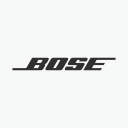The ProFlight Series 2 takes audio features Bose is known for—like active noise cancellation and clarity—and fits them into the lightest, most compact aviation headset Bose has ever produced.
Overview

Digital active noise cancellation
Significantly reduces ambient noise, allowing users to lower radio volume and hear what they need to hear.
Bluetooth® connectivity and audio prioritisation
Connect wirelessly to mobile devices, audio systems and electronic flight bags. Audio prioritisation allows users to mix Bluetooth audio with intercom audio or have intercom transmissions temporarily mute Bluetooth.
127.6-gram (4.5-ounce) on-head weight
For enhanced comfort during extended use.
Three user-selectable modes of noise cancellation
Adjust noise cancellation levels according to personal preference and noise environment.
Tap control for talk-through communication
Double-tap either earbud to optimise audio for communication outside of the intercom.
Thin, flexible cable
Light and flexible cable allows for freedom of movement and easy storage.
Side swappable mic
Mount the boom mic and cable on either side of the headset, no tools required.
Light, yet durable.
Even though it’s compact at 127.6 grams (4.5 ounces), the ProFlight Series 2 is designed to be durable. This headset is FAA TSO and EASA E/TSO-C139a certified, meaning it’s been engineered to withstand even the toughest conditions.
ProFlight Series 2 includes a thin, light and flexible cable, providing pilots freedom of movement and easy unpacking and storage.
Easily configured to meet your needs
Choose from three levels of active noise cancellation, control wireless Bluetooth connections to mobile devices*, audio systems and electronic flight bags, and manage other primary functions of the ProFlight Series 2 from the ergonomic control module. The included lanyard provides easy and stable storage during flight.
*On selected models.
Easy Bluetooth operation and prioritisation in the Bose Connect app
Connect wirelessly to mobile devices, audio systems and electronic flight bags with the ProFlight Series 2’s optional Bluetooth functions. Audio prioritisation enables you to mix Bluetooth audio with intercom audio or have intercom transmissions temporarily mute Bluetooth.
The Bose Connect app makes Bluetooth audio sharing, connection management, pairing, unpairing and renaming devices easy and user-friendly.
Long-term durability
Deceptively light, impressively tough
Extensive testing in the Bose design assurance lab ensures that our ProFlight headsets are tough enough to withstand extended use in demanding environments. See how we tested the original ProFlight in this video. A five-year worldwide limited warranty provides further peace of mind.
Specs
FAQs
How is the ProFlight Series 2 different from the previous model?
We’ve made several improvements based on customer feedback. The most significant improvement is a thinner, lighter cable with much greater flexibility that provides improved comfort and stability and reduces on-head weight by 11 grams (0.4 ounces). Tap control for talk-through communication has been improved. The microphone boom now includes winglets to assist in correct mic alignment and adjustment. Finally, the carry case has been improved to aid in faster stowage and transportation with the addition of a hanging loop, carabiner and a more open internal design.
What is the difference between the ProFlight Series 2 and A30 headsets? Are they each appropriate for all types of aircraft?
They are completely different headsets and have different fundamental architectures, although they share features such as Bluetooth capability, selectable stereo/mono and auto-on/auto-off. The A30 features an around-ear design and is meant for noisier aircraft, such as non-pressurised single-engine models. The ProFlight Series 2 features a headbanded, in-ear design and is meant for crewed aircraft that are typically pressurised and less noisy, like most jets.
How many different versions and configurations are available for the ProFlight Series 2?
Customers can configure their ProFlight Series 2 Aviation Headsets in many ways. Customers have their choice of connector configurations with each module. Each connector configuration is available with Bluetooth®, and non-Bluetooth variants in dual-plug and 5-pin configurations. Designed for use in both civilian and military aircraft, the ProFlight Series 2 offers most common plug configurations:
Dual G/A plug (PJ 068 and 1/4-inch stereo): With this option, the headset is connected to the aircraft’s intercom via a dual plug and is not powered by the aircraft. Two AA alkaline batteries provide a minimum of 45 hours of operation while flying. This configuration is the most common version purchased by pilots.
XLR five pin: Often called the Airbus plug, this configuration is a mono connection to the aircraft and may be powered by the aircraft, depending on the installation. When disconnected, the flexible power feature lets the headset switch seamlessly from aircraft power to battery power, so users experience no interruption when the headset is plugged into or unplugged from a source of power.
Six-pin connector wired to the aircraft (LEMO): With this option, the headset is connected to the aircraft via a 6-pin connector and is powered directly from the aircraft. When disconnected, the flexible power feature switches the headset seamlessly from aircraft power to battery power, so users experience no interruption when the headset is plugged into or unplugged from the aircraft.*
*Adapters are available from Bose to convert a six-pin connector to either a dual G/A plug or a U174 for additional connection flexibility.
Can I comfortably wear glasses with the ProFlight Series 2?
Yes. The side pads rest slightly behind and above the ear, which allows you to put on and remove eyeglasses without touching the headset. You can wear almost any frames you want without sacrificing noise reduction or comfort.
Can I swap the microphone to either side?
Yes. The integrated boom mic and cable assembly can be attached to either the left- or right-hand side of the headset. The self-guiding connector makes it easy to attach the boom mic and cable assembly. The cable can be swapped easily in seconds and without tools.
What is the battery life of the ProFlight Series 2?
Using two AA alkaline batteries, the ProFlight Series 2 will operate for at least 45 hours of flying in typical aircraft noise. With continuous operation of the Bluetooth function, battery life will be at least 25 hours. As always, battery life varies with the type of battery, the noise environment and features used. The headset’s battery life indicator light alerts the user when batteries should be replaced.
Can I use rechargeable batteries?
Rechargeable batteries are not recommended because your flying-time battery life will be reduced from the 45-hour life, depending on the type of battery chemistry used. Rechargeable batteries also alter the accuracy of the battery status indicator light, so that when the light changes to amber, you will have less than the usual eight hours of flying time remaining that you can expect with non-rechargeable AA alkaline batteries.
Can I use lithium-ion batteries?
Lithium-ion batteries should not be used due to their typically higher voltage.
How does the auto-on feature work?
Headsets that can use aircraft power (six-pin and five-pin XLR) will automatically turn on when the aircraft power is present. A switch inside the control module battery compartment can be used to configure this feature based on user preference.
How does the auto-off feature work?
The automatic shut-off feature in your ProFlight Series 2 detects when the headset is not in use and shuts it off after several minutes to preserve battery power. The exact time it takes to power off varies and can range between 6 and 45 minutes of inactivity.
What is TSO and why is it important?
A Technical Standard Order (TSO) is a minimum performance standard for specified materials, parts and appliances used on civil aircraft. When a company is authorised to manufacture a material, part or appliance to a TSO standard, this is referred to as TSO authorisation. When a company receives a TSO authorisation, it is assured that the product meets these minimums in both design and production. Bose Corporation meets all, and exceeds many, TSO requirements. Receiving a TSO authorisation is not an approval to install and use the authorised article in the aircraft.





















